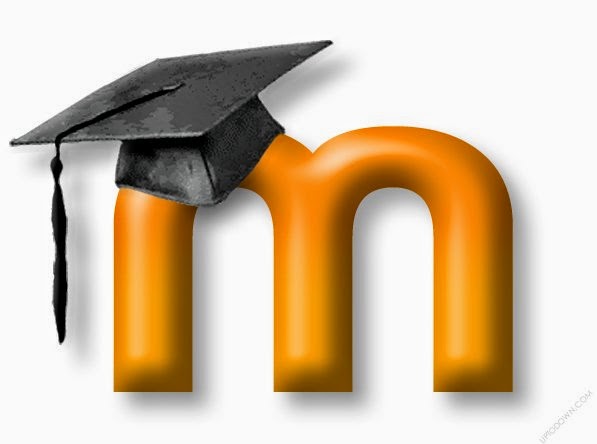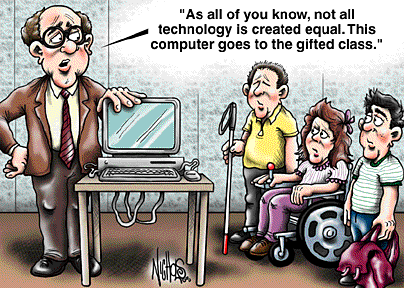Over the course of this semester in ED271, I have been exposed to many new tools. Never in my life have I learned so much about technology and the Internet than I have in this class. In this assignment, I assessed eight different tools. Below is the point scale that I used to complete my assessment:
5 = Highly recommended! Make use of it!
4 = Recommended. Try it out! It's worth using.
3 = Usable. However, there are many other tools out there!
2 = Make this your last resort!
1 = You are wasting your time here!

Firefox 4 out of 5
Prior to taking this class, I did not even know what Firefox was. I was simply plain-Jane using Internet Explorer, most of the time. Although I used Firefox, as well as Google Chrome, a couple of times, I never knew the names of these web browsers. I just always thought there was one web browser and that they just constantly changed the icon. Now that I've learned to use Firefox, I can clearly see the difference between it and other web browsers. Firefox is easy to use and free to download. I like how Firefox has the Google Search bar readily available, as well as its ability to block pop-ups. Another plus, for me, is that Firefox is faster than Internet Explorer. Most schools, such as the University of Guam, use Firefox as their main browser, which attests to its effectiveness. However, I prefer to use Google Chrome over other web browsers.
Moodle 5 out of 5

It is every student's dream to go to school while staying home! Well, for me, at least. Moodle offers every student that opportunity. Through Moodle, students are able to access copies of class work and other related documents, see their grades, keep track of their attendance, and post forums to communicate with classmates and instructors. I was introduced to Moodle in my second semester at the University of Guam. At first, I was hesitant to use it, simply because I did not trust online communication and work. All that changed when I saw the effectiveness and convenience of accessing class assignments and keeping myself on-track. One of my favorite things about Moodle are the reminders that automatically set on the calendar for assignments that are due. With the many things going on in a student's head, that would have to be a huge plus for this tool. I also like how everything is organized week by week to keep students on top of their game. Not a negative aspect, but maybe just a suggestion, Moodle could use some color and graphics to make it more appealing. Overall, I highly recommend teachers and students to make use of this awesome communication tool.
LiveBinders 4 out of 5
The Internet has so many resources I want to share and save! There are numerous websites that I use. Wouldn't it be easier if I could just gather and save it all in one place? Impossible? ABSOLUTELY NOT! LiveBinders is a free tool that allows you to compile content information and important websites as if it were a real 3-ring binder. This tool is great for teachers and students to compile important websites and class content to share with each other. One of the best things about LiveBinders is that you are able to create as many binders as you want and make them either private or public. Another awesome thing about this is that you can use it as a presentation tool. Are you still using powerpoint? If you are, get out of that Jurassic era! There are many other tools, such as LiveBinders, that can make your presentations more creative and easily accessible. However, there are some pet peeves. First of all, sometimes, certain websites are unable to link, or take forever to open up on LiveBinders. Secondly, adding content such as information text, pictures, or videos must fit a certain format, which makes it a bit irritating for users. Overall, LiveBinders is something I would definitely use in the future! It wouldn't hurt to try it out! See for yourself and access mine by clicking here.
Google Apps 5 out of 5
What can Google Apps do? The better question is, "What can Google Apps NOT do?"
Google is probably the god of the Internet! It can do just about everything imaginable. An entire blog is not enough to tell what Google can do. Google is probably best known for its extensive search engine. Someone could ask a simple or challenging, intellectual question, and the common tongue would say, "Google it!" Other than that, Google has numerous features that are useful to just about anyone. For teachers and students, Google Docs is a great way to share documents and work on it collaboratively, seeing what the other is writing in the process. Other features include instant messaging, Google Talk, a scholarly search engine, Google Translator, and many more. You can also create surveys and polls and send them out to get feedback! You name it, Google's got it! One of my favorite things about Google is its free blogs with the use of Blogger and Gmail. With Google Apps, everyone benefits: schools, businesses, government, etc. Use this Internet god to navigate, explore, discover, try, and create new things!
Wix.com 3 out of 5
Wix.com is a free website creator. As I have mentioned, until I took this class, being
creative with technology and the Internet was not my thing. When I first used Wix.com to create a website for one of my projects, I had fun using it, however, not without struggles. There were many neat template to choose from to create your own website. This also gave me some neat ideas to blend in creating my website. Although I had fun creating websites, I have to admit that I struggled quite a bit. Wix.com does not give you the option to create your own website from scratch. Well, maybe just in my experience with it. Also, the tutorial does not really give you all the information you need to make a legit website. Most of the time, I just had to keep playing with the different tools to learn, which was very time consuming and a bit annoying. However, I do have to give credit to this website. It was the first website creator I used, and many others like it a lot. All in all, not bad!
LiveText 5 out of 5
In applying for admission into the School of Education this semester, LiveText is probably one of my best friends. I was first introduced to LiveText last semester when I took my Intro to Teaching course. In the School of Education, here, at the University of Guam, I believe all students under their programs must register for LiveText. There are many things that I like about LiveText. First of all, I like how it is like a portfolio for all your work throughout your college life. This is very important for me, as an Education major, since it will be used again to evaluate my performance in SOE. Another thing I like about it is that due dates are right there when you log in. This is very helpful for me, especially with the many things going on in my head for school. Another great thing about this is the feedback between students and teachers. I always appreciate feedback, and thankfully, many of my teachers have made use of this. LiveText will also be useful to me as a future teacher in creating lesson plans, worksheets, and other neat things. Since LiveText also acts as an electronic portfolio, it will come in handy when showcasing work to future employers. I would recommend more teachers to make use of LiveText in their classrooms.
Stormboard 2 out of 5
Stormboard is an online communication tool that allows groups to collaborate with the use
of sticky notes. Of all the different online communication tools I exposed to this semester, Stormboard is my least favorite, for a couple of reasons. First of all, the board is so large that it gets tiring looking for a specific post you might want to read or respond to. Secondly, the prices are ridiculous. The free version allows you only to be in one storm at a time. The price gets higher if you want to add more features for just two storms or more. Another pet peeve for me is that the board and tools seem to busy on the screen. I believe Stormboard is more useful for business people rather than educators and students. I would recommend this tool as one of the last resorts. It's not all that bad, but I wouldn't use it.
Joomag 5 out of 5
Joomag would have to be one of my favorite presentation tools that I was exposed to this semester. Presenters capture their audience through the use of creativity. Joomag does just that by organizing presentations in the form of an online magazine. You can upload photos, videos, and graphics and organize them quite flexibly in your Joomag magazine. Joomag is a creative, fun way to create workshop presentations, meeting agendas, school projects, and information guides. It is an attractive and professional-looking presentation tool. I would recommend everyone and anyone to try this out.







